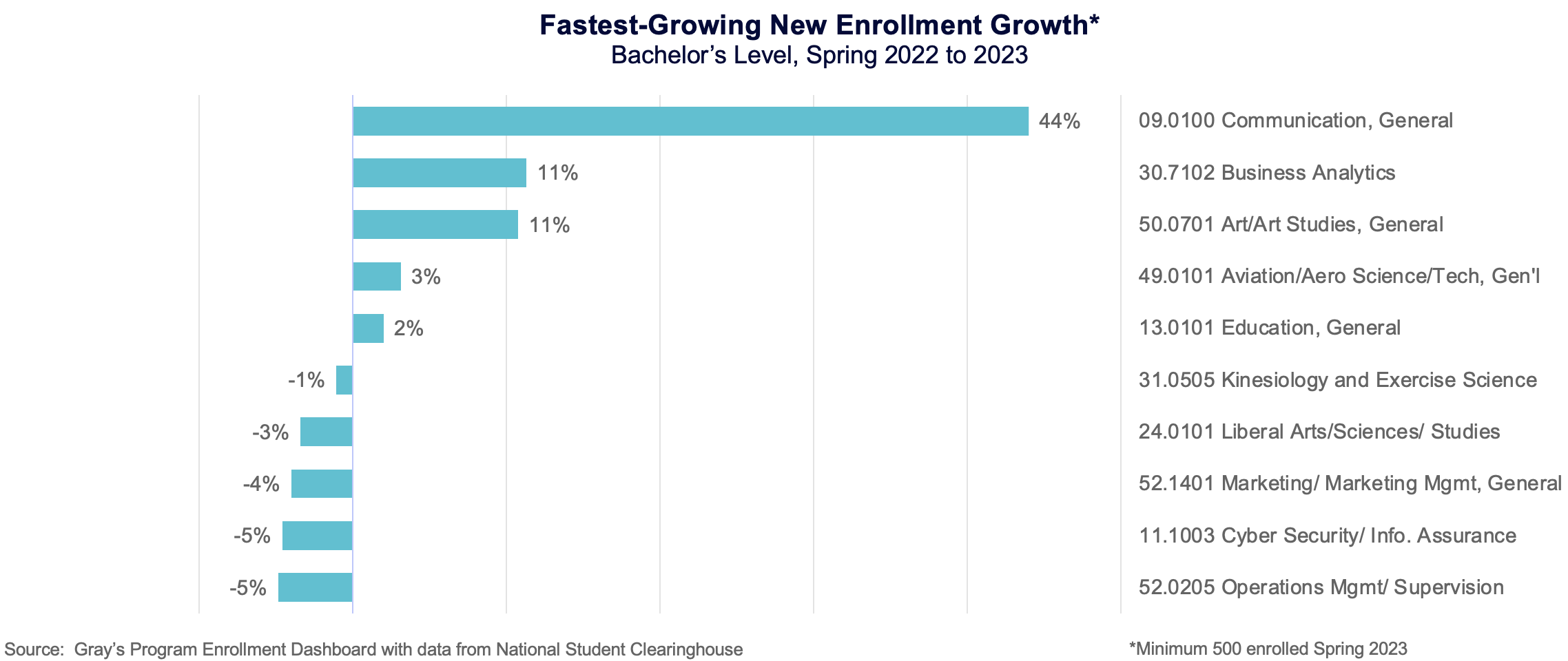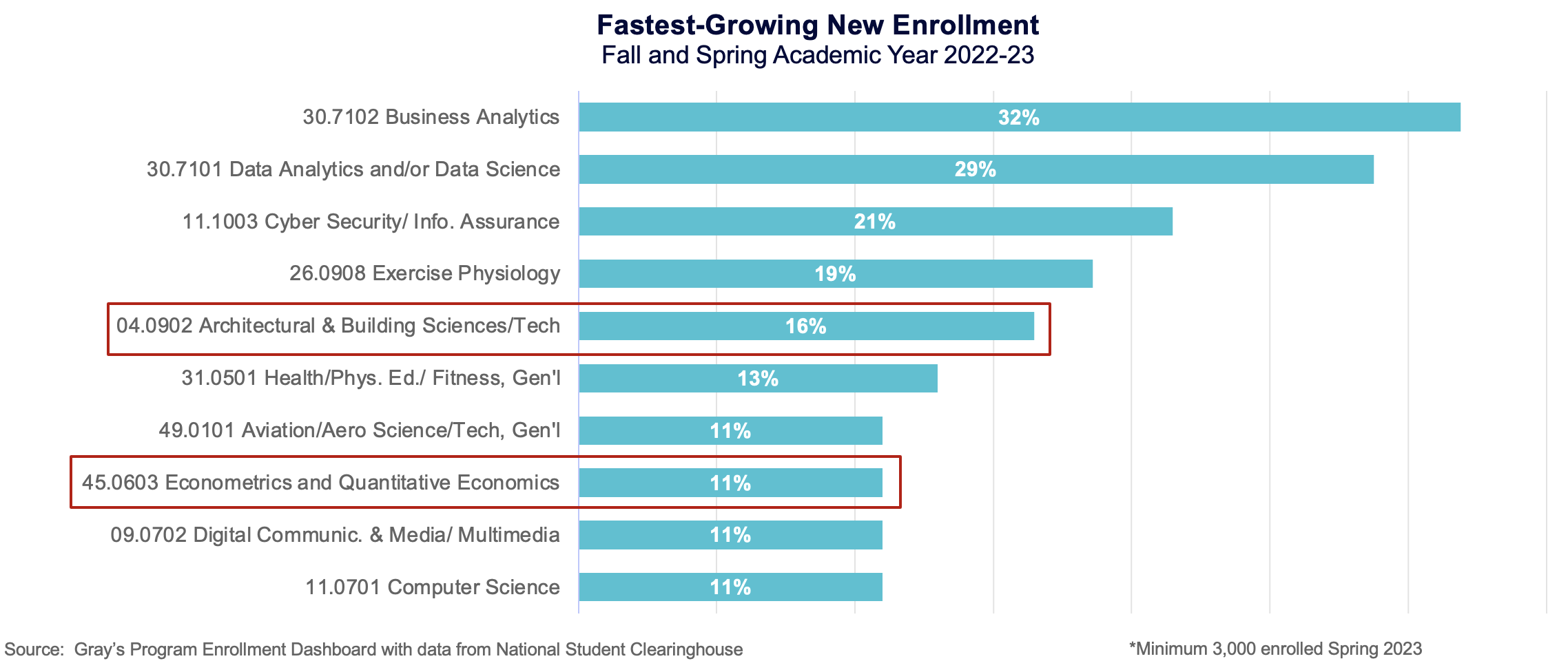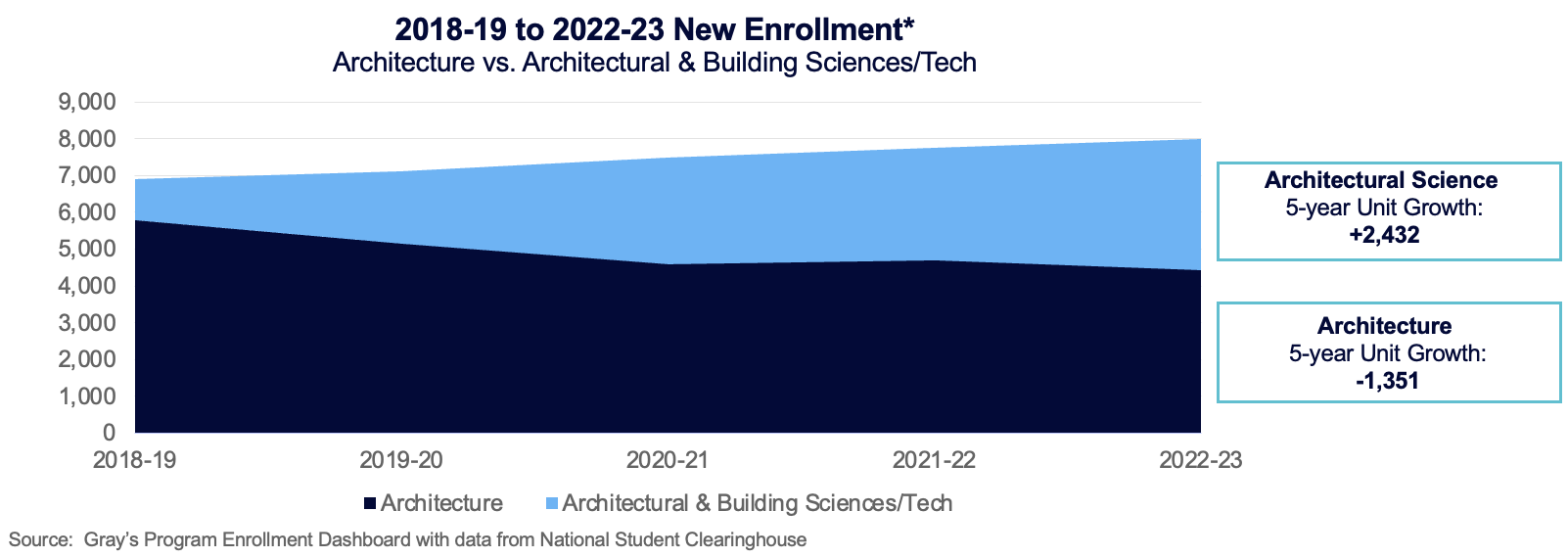The National Student Clearinghouse released its Spring 2023 data, and bachelor’s-level total enrollment fell -0.2 percent. However, new enrollment grew significantly in a handful of programs, and one previously fast-growing program fell in the Spring.
Using data from the National Student Clearinghouse and Gray’s proprietary Program Enrollment Dashboard, we analyzed the spring 2023 enrollment data to identify the programs with the highest enrollment and those with the fastest year-over-year growth in the Spring. Note: for this analysis, we used data on new student enrollment, not total enrollment.
Most Popular US Bachelor’s Programs
In spring 2023, the 10 programs with the highest enrollment took a 61% share of all new student enrollment. Business was by far the most popular program, with more than 14,000 new students. Psychology programs were also popular, adding 5,153 new students. However, in the spring, none of the highest-enrolled programs grew year-over-year. Business enrollment fell 17 percent, and Psychology fell 20 percent. Perhaps most concerning, given the national nursing shortage, enrollment in Registered Nursing programs fell 30 percent year-over-year, from 4,273 in spring 2022 to 2,985 in 2023.

Fastest-Growing Bachelor’s Programs
Compared to Spring 2022, only five bachelor’s programs grew enrollment in Spring 2023. Cybersecurity, a program that has grown rapidly in recent years, saw a small dip this spring. Programs with the highest year-over-year gains in new students include Communication, Business Analytics, and Art/Art Studies. Other programs in the arts were trending up in the fall – Cinematography, Music, and Fine/Studio Arts were among the 15 programs with the highest growth – but Art Studies was the only spring arts-related program that added students. New enrollment in Education programs has experienced a comeback after a pandemic dip, and Business Analytics has steadily grown over the last four spring terms.

*Minimum 500 enrolled in Spring 2023; Excludes programs marked “Other,” xx.xx99
New Enrollment for Fall and Spring Combined
When we combined Fall and Spring semesters, new bachelor’s enrollment fell one percent year-over-year, but the news got better for program growth. Eight of the ten fastest-growing programs in combined semesters were in STEM fields. Both Architectural and Building Sciences/Tech and Econometrics also made rapid gains over the past four years.

*Minimum 3,000 enrolled Fall 2022 – Spring 2023; Excludes programs marked “Other,” xx.xx99
Updates to IPEDS CIP codes sometimes skew growth rates, particularly in STEM fields. For example, the growth in Architectural and Building Sciences/Tech was largely cannibalized from non-STEM programs in the same fields. Why? STEM programs are more appealing to international students because they can stay in the US longer after graduation if they complete a STEM-designated program. As shown below, newer STEM programs like Architectural and Building Sciences/Tech are taking share from Architecture programs over time. (See here for international student completion rates of Architecture vs. Architectural/Building Sciences and Economics vs Econometrics).

*Fall and Spring only
Conclusion
The Spring 2023 data from the National Student Clearinghouse reveals a mixed picture for bachelor’s-level new enrollment in the United States. While overall spring enrollment is not making gains, there are a handful of programs that have experienced significant growth. However, it is concerning that the most popular programs experienced a decline in new enrollment compared to the previous year, and only five programs grew year-over-year.




